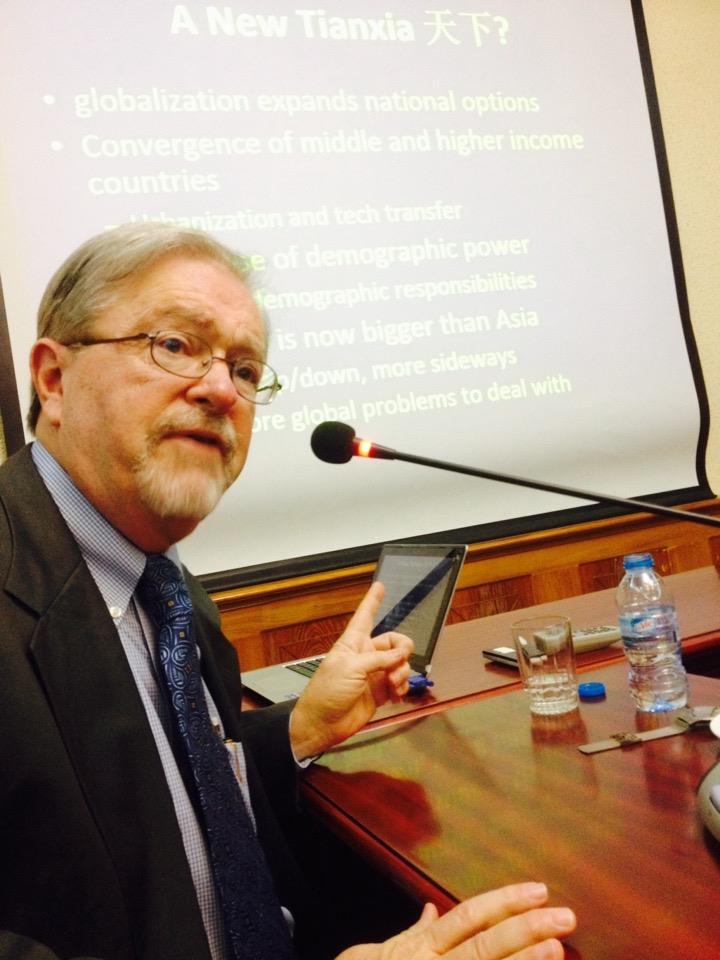
The presentation of Prof.Brantly Womack took a historical and comparative approach to analyzing differences in the culture of international relations between the West and the East in different historical areas.
From this perspective, in the East there were asymmetric international relations while those in the West were of competition. Especially in Asia, China rose up as a solid center with the largest population, resources and territory compared to other nations and regions. China’s policies were focused on the accommodation and bargaining for power, such as through the tribute system. In contrast, in the West there was a liquid center, in which empires fought and compete with each other to gain a dominant and hegemonic position. Thus it was difficult for a center such as China to arise, and the Mediterranean was the only section where trade and colonialism took place between nations.
This trend continued until 1500. Since then, modernization came with the advance of technology and wealth but also the culture of competition and destructiveness, which was reflected most vividly in the 20th century with two World Wars. However, during the Cold War this culture somewhat diminished as the US and Soviet Union both avoided a damaging war. As for Asia, there was a strong resistance to colonialism as reflected in the fights for independence in smaller countries. After the Cold War, the United States became a dominant power, while in Asia an asymmetric situation occurred with the rise of China.

Photo: Pham Quang Minh
The 21st century sees a decrease in the culture of competition as the tendency of cooperation increases. The 2008 financial crisis made the United States lose its dominant position, while China continued to rise as the most influential Asian country with superior population and larger horizontal influence. But China instead of exerting its dominance over other countries would retain stable asymmetric relations. It also seeks to compete with United States in a cautious and peaceful way without resorting to war or falling back to the Cold War bipolar system. The two nations will become centers but won’t seek to dominate nor control the world.
At the meeting, many questions were given to Prof. Brantly Womack on issues such as the internal threats to China, the future world order, the response of Vietnam to Sino-US relations, the role of India and Japan in asymmetric relations in Asia, etc.
Brantly Womack teaches International Relations at Virginia University. He is an expert in Sino-Vietnam relations and the author of China and Vietnam The Politics of Asymmetry.
Author: Tran Minh
Reader Comments
Newer articles
Older articles